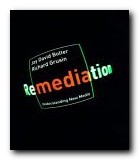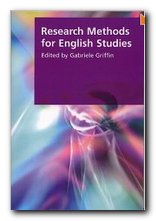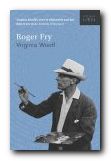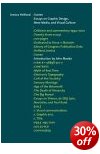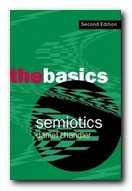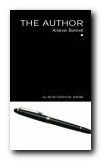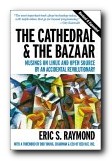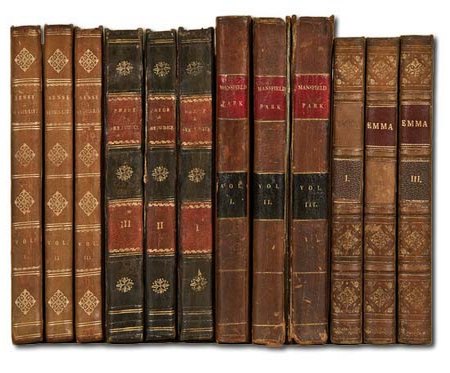
Abdurgham, Alison. Women in Print: Writing and Women’s Magazines from the Restoration to the Accession of Victoria. London: Allen & Unwin, 1972.
Altick, Richard Daniel. The English Common Reader: A Social History of the Mass Reading Public, 1800-1900. 2nd ed. Columbus: Ohio State UP, 1998.
Armbruster, Carol, ed. Publishing and Readership in Revolutionary France and America. Westport, CT: Greenwood Press, 1993.
Anderson, Benedict R. O’Gorman. Imagined Communities: Reflections on the Origins and Spread of Nationalism. Rev. ed. London: Verso, 1991.
Anderson, Patricia. The Printed Image and the Transformation of Popular Culture 1790-1860. Oxford: Clarendon P of Oxford UP, 1991.
Armstrong, Adrian. Technique and Technology: Script, Print, and Poetics in France 1470-1550. New York: Oxford UP, 2000.
Barker, Hannah and David Vincent. Language, Print, and Electoral Politics, 1790-1832: Newcastle-under-Lyme Broadsides. Rochester, NY: Boydell P/Parliamentary History Yearbook Trust, 2001.
Baron, Naomi S. Alphabet to Email: How Written English Evolved and Where It’s Heading. London: Routledge, 2000.
Barton, David and Nigel Hall, eds. Letter Writing as a Social Practice. Philadelphia: John Benjamins, 2000.
Bazerman. Charles. The Languages of Edison’s Light. Cambridge, MA: Massachusetts Institute of Technology P, 1999.
—. Shaping Written Knowledge. Madison: U of Wisconsin P, 1988.
Bell, William, Laurel Brake, and David Finkelstein, eds. Nineteenth-Century and the Construction of Identities. New York: St. Martin’s P, 2000.
Besnier, Niko. Literacy, Emotion, and Authority. Cambridge, UK: Cambridge UP, 1995.
Birkerts, Sven. The Gutenberg Elegies: The Fate of Reading in an Electronic Age. Winchester, MA: Faber and Faber, 1994.
Blaney, Peter W. M. The First Folio of Shakespeare. Washington, DC: Folger Library Publications, 1991.
Bobrick, Benson. Wide as the Waters: The Story of the English Bible and the Revolution It Inspired. New York: Simon & Schuster, 2001.
Bolter, Jay David. Writing Space: Computers, Hypertext and the Remediation of Print. 2nd ed. Hillsdale, NJ: Lawrence Erlbaum Associates, 2001
Bolter, Jay David and Richard Grusin. Remediation: Understanding New Media. Cambridge, MA: Massachusetts Institute of Technology, pp.295, 1999.
Borgmann, Albert. Holding on to Reality: The Nature of Information at the Turn of the Millennium. Chicago: U of Chicago P, 1999.
Brewer, John. The Pleasures of the Imagination: English Culture in the Eighteenth Century, New York: Farrar, Straus and Giroux, 1997.
Burke, Sean, ed. Authorship: From Plato to the Postmodern: A Reader. Edinburgh: Edinburgh UP, 1995.
Cadman, Eileen, Gail Chester, and Agnes Pivot. Rolling Our Own: Women as Printers, Publishers and Distributors. London: Minority P Group, 1981.
Carlson, David R. English Humanist Books: Writers and Patrons, Manuscript and Print, 1475-1525. Toronto: U of Toronto P, 1993.
Cavallo, Guglielmo and Roger Chartier, eds. A History of Reading in the West. Trans. Lydia G. Cochrane. Amherst: U of Massachusetts P, 1999.
Certeau, Michel de. The Practice of Everyday Life. Trans. Steven Rendall. Berkeley: U of California P, 1984.
Chambers, Douglas. The Reinvention of the World: English Writing 1650-1750. London: Arnold/Hodder Headline Group, 1996.
Chambers, Douglas. The Reinvention of the World: English Writing 1650-1750. London: Arnold/Hodder Headline Group, 1996.
Chartier, Roger. The Cultural Uses of Print in Early Modern France. Trans. Lydia G. Cochrane. Princeton: Princeton UP, 1988.
—, ed. The Culture of Print: Power and the Uses of Print in Early Modern Europe. Trans. Lydia G. Cochrane. Princeton: Princeton UP, 1989.
—. The Order of Books: Readers, Authors, and Libraries in Europe Between the Fourteenth and Eighteenth Centuries. Trans. Lydia G. Cochrane. Stanford: Stanford UP, 1994.
Chaytor, H. J. From Script to Print: An Introduction to Medieval Vernacular Literature. London: W. Heffer and Sons, 1945.
Crain, Patricia A. The Story of A: The Alphabetization of America from The New England Primer to The Scarlet Letter. Stanford: Stanford UP, 2000.
Crosby, Alfred W. The Measure of Reality: Quantification and Western Society, 1250-1600. Cambridge, UK: Cambridge UP, 1997.
Cuddihy, John Murray. The Ordeal of Civility: Freud, Marx, Levi-Strauss, and the Jewish Struggle with Modernity. 2nd ed. Boston: Beacon P, 1987.
Darnton, Robert. The Forbidden Best-Sellers of Pre-Revolutionary France. New York: Norton, 1995.
Darnton, Robert and Daniel Roche. Revolution in Print: The Press in France, 1775-1800. Berkeley: U of California P, 1989.
Davidson, Cathy N. Revolution and the Word: The Rise of the Novel in America. New York: Oxford UP, 1986.
DeRitter, Jones. The Embodiment of Characters: The Representation of Physical Experiences on Stage and in Print, 1728-1749. Philadelphia: U of Pennsylvania P, 1994.
Dock, Julie Bates. The Press of Ideas: Readings for Writers on Print Culture and the Information Age. Boston: Bedford Books/St. Martin’s P, 1996.
Dolan, Frances E. Whores of Babylon: Catholicism, Gender and Seventeenth-Century Print Culture. Ithaca: Cornell UP, 1999.
Eberly, Rosa A. Citizens Critics: Literary Public Spheres. Urbana: U of Illinois P, 2000.
Eisenstein, Elizabeth L. Grub Street Abroad: Aspects of the French Cosmopolitan Press from the Age of Louis XIV to the French Revolution. Oxford: Clarendon P of Oxford UP, 1992.
—. The Printing Press as an Agent of Change. 2 vols. Cambridge, UK: Cambridge UP, 1979.
Eliot, Simon. Some Patterns and Trends in British Publishing, 1800-1919. London: Bibliographical Society, 1994.
Elsky, Martin. Authorizing Words: Speech, Writing, and Print in the English Renaissance. Ithaca: Cornell UP, 1989.
Ezell, Margaret J. M. Social Authorship and the Advent of Print. Baltimore: Johns Hopkins UP, 1999.
Farrell, Thomas J. Walter Ong’s Contributions to Cultural Studies: The Phenomenology of the Word and I-Thou Communication. Cresskill, NJ: Hampton, 2000.
Febvre, Lucien Paul Victor and Henri-Jean Martin. The Coming of the Book: The Impact of Printing, 1450-1800. Trans. David Gerard. Ed. Geoffrey Nowell-Smith and David Wootton. London: Verso, 1997.
Ford, Worthington Chauncey. The Boston Book Market, 1679-1700. New York: Burt Franklin, 1972. Reprint of 1917 ed.
Fox, Adam. Oral and Literate Culture in England, 1500-1700. New York: Oxford UP, 2000.
Frasca-Spada, Marina and Nicholas Jardine, eds. Books and the Sciences in History. Cambridge, UK: Cambridge UP, 2000.
Freedman, Joseph S. Philosophy and the Arts in Central Europe, 1500-1700: Teaching and Texts in Schools and Universities. Aldershot, UK: Ashgate, 1999.
Fuller, Mary C. Voyages in Print: English Travel to America 1576-1624. Cambridge, UK: Cambridge UP, 1995.
Gilmartin, Kevin. Print Politics: The Press and Radical Opposition in Early Nineteenth-Century England. Cambridge, UK: Cambridge UP, 1996.
Gitelman, Lisa. Scripts, Grooves and Writing Machines: Representing Technology in the Edison Era. Stanford: Stanford UP, 1999.
Goggin, Maureen Daly, ed. Inventing a Discipline: Rhetoric Scholarship in Honor of Richard E. Young. Urbana, IL: National Council of Teachers of English, 2000.
Goody, Jack. The Logic of Writing and the Organization of Society. Cambridge, UK: Cambridge UP, 1986.
—. The Power of the Written Tradition. Washington, DC: Smithsonian Institution P, 2000.
Graff, Harvey J. The Labryrinths of Literacy: Reflections on Literacy Past and Present. Rev. ed. Pittsburgh: U of Pittsburgh P, 1995.
—. The Legacies of Literacy: Continuities and Contradictions in Western Culture and Society. Bloomington: Indiana UP, 1987.
—. Literacy in History: An Interdisciplinary Research Bibliography. New York: Garland, 1981.
—. The Literacy Myth: Cultural Integration and Social Structure in the Nineteenth-Century City. New York: Academic P, 1979.
—, ed. Literacy and Social Development in the West: A Reader. New York: Cambridge UP, 1981.
Grafton, Anthony, April Shelford, and Nancy G. Siraisi. New Worlds, Ancient Texts: The Power of Tradition and the Shock of Discovery. Cambridge, MA: Belknap P of Harvard UP, 1992.
Gray, Floyd. Gender, Rhetoric, and Print Culture in French Renaissance Writing. Cambridge, UK: Cambridge UP, 2000.
Green, Ian. Print and Protestantism in Early Modern England. New York: Oxford UP, 2001.
Greetham, D. C. Textual Scholarship: An Introduction. New York: Garland, 1992. Includes extensive bibliography.
Gronbeck, Bruce E., Thomas J. Farrell, and Paul A. Soukup, eds. Media, Consciousness, and Culture: Explorations of Walter Ong’s Thought. Newbury Park, CA: Sage Publications, 1991.
Habermas, Jurgen. The Structural Transformation of the Public Sphere. Trans. Thomas Burger and Frederick Lawrence. Cambridge, MA: Massachusetts Institute of Technology P, 1989.
Harrison, Peter. The Bible, Protestantism, and the Rise of Natural Science. Cambridge, UK: Cambridge UP, 1998.
Hart, James David. The Popular Book: A History of America’s Literary Taste. New York: Oxford UP, 1950.
Havelock, Eric A. The Muse Learns to Write. New Haven: Yale UP, 1986.
Hayes, Kevin J. Poe and the Printed Word. Cambridge, UK: Cambridge UP, 2000.
Headrick, Daniel R. When Information Came of Age: Technologies of Knowledge in the Age of Reason and Revolution, 1700-1850. New York: Oxford UP, 2000.
Heim, Michael. Electric Language: A Philosophical Study of Word Processing. New Haven: Yale UP, 1987.
Hindman, Sandra L., ed. Printing the Written Word: The Social History of Books, circa 1450-1520. Ithaca: Cornell UP, 1991.
Hobart, Michael E. and Zachary S. Schiffman. Information Ages: Literacy, Numeracy, and the Computer Revolution. Baltimore: Johns Hopkins UP, 1998.
Howard-Hill, T. H. British Literary Bibliography and Textual Criticism, 1890-1969. Volume 6 of and index to British Literary Bibliography. Oxford: Clarendon P of Oxford UP, 1980.
Isaac, Peter and Barry McKay, eds. The Mighty Engine: The Printing Press and Its Impact. New Castle, DE: Oak Knoll P, 2000.
Ivins, William. Prints and Visual Communication. Cambridge, MA: Harvard UP, 1953.
Jagodzinski, Cecile M. Privacy and Print: Reading and Writing in Seventeenth-Century England. Charlottesville: UP of Virgina, 1999.
Johns, Adrian. The Nature of the Book: Print and Knowledge in the Making. Chicago: U of Chicago P, 1998.
Johnson-Eilola, Johndan. Nostalgic Angels: Rearticulating Hypertext Writing. Norwood, NJ: Ablex, 1997.
Jordan, John O. and Robert L. Patten, eds. Literature in the Marketplace: Nineteenth-Century British Publishing and Reading Practices. Cambridge, UK: Cambridge UP, 1995.
Kaestle, Carl F., Helen Damon-Moore, Lawrence C. Stedman, Katherine Tinsley, and William Vance Trollinger, Jr. Literacy in the United States: Readers and Reading Since 1880. New Haven: Yale UP, 1991.
Kaufer, David S. and Kathleen M. Carley. Communication at a Distance: The Influence of Print on Sociocultural Organization and Change. Hillsdale, NJ: Lawrence Erlbaum Associates, 1993.
Keller-Cohen, Deborah, ed. Literacy: Interdisciplinary Conversations. Cresskill, NJ: Hampton P, 1994.
Kernan, Alvin. Samuel Johnson and the Impact of Print. Princeton: Princeton UP, 1989.
Kilgour, Frederick G. The Evolution of the Book. New York: Oxford UP, 1998.
Kintgen, Eugene R. Reading in Tudor England. Pittsburgh: U of Pittsburgh P, 1996.
Knoppers, Laura Lunger. Constructing Cromwell: Ceremony, Portrait, and Print, 1645-1661. Cambridge, UK: Cambridge UP, 2000.
Kramnick, Jonathan Brody. Making the English Canon: Print-Capitalism and the Culture of the Past, 1700-1770. Cambridge, UK: Cambridge UP, 1998.
Lanham, Richard A. The Electronic Word: Democracy, Technology and the Arts. Chicago: U of Chicago P, 1993.
—. Literacy and the Survival of Humanism. New Haven: Yale UP, 1983.
Laspina, James Andrew. The Visual Turn and the Transformation of the Textbook. Mahwah, NJ: Lawrence Erlbaum Associates, 1998.
Leith, Philip. Formalism in AI and Computer Science. Chichester, UK: Ellis Horwood, 1990.
Logan, Robert. The Alphabet Effect: The Impact of the Phonetic Alphabet on the Development of Western Civilization. New York: William Morrow, 1986.
—. The Sixth Language: Learning & Living in the Internet Age. Toronto: Stoddart Publishing, 2000..
Love, Harold. The Culture and Commerce of Texts: Scribal Publication in Seventeenth-Century England. Amherst: U of Massachusetts P, 1998.
Luke, Carmen. Pedagogy, Printing, and Protestantism: The Discourse on Childhood. Albany: State U of New York P, 1989.
Manguel, Alberto. A History of Reading. New York: Penguin, 1996.
Marotti, Arthur F. Manuscript, Print, and the English Renaissance Lyric. Ithaca: Cornell UP, 1995.
Marotti, Arthur F. and Michael D. Bristol, eds. Print, Manuscript, and Performance: The Changing Relationships of the Media in Early Modern England. Columbus: Ohio State UP, 2000.
Martin, Henri-Jean, The History and Power of Writing, Chicago: University of Chicago Press, 1995, trns. Lynda G. Cochrane, pp.591, ISBN 0226508366
—. Print, Power, and People in Seventeenth-Century France. Trans. David Gerard. Metuchen, NJ: Scarecrow, 1993.
Mayer, Thomas F. and D. R. Woolf, eds. The Rhetorics of Life-Writing in Early Modern Europe: Forms of Biography from Cassandra Fedele to Louis XIV. Ann Arbor: U of Michigan P,1995.
Mazzio, Carla and Douglas Trevor, eds. Historicism, Psychoanalysis, and Early Modern Culture. New York: Routledge, 2000.
McGrath, Alister. In the Beginning: The Story of the King James Bible and How It Changed aNation, a Language and a Culture. New York: Doubleday, 2001.
McIntosh, Carey. The Evolution of English Prose: Style, Politeness, and Print Culture. Cambridge, UK: Cambridge UP, 1998.
McKenzie, D. F. Bibliography and the Sociology of Texts. New York: Cambridge UP, 1999.
—. Oral Culture, Literacy, and Print in Early New Zealand: The Treaty of Waitangi. Wellington, NZ: Victoria UP, 1985.
McLuhan, Marshall. The Gutenberg Galaxy: The Making of Typographic Man. Toronto: U of Toronto P, 1962.
—. Understanding Media: The Extensions of Man. New York: McGraw-Hill, 1964.
Melendez, A. Gabriel. So All Is Not Lost: The Poetics of Print in Nuevomexicano Communities, 1834-1958. Albuquerque: U of New Mexico P, 1997.
Miller, Perry. The New England Mind: The Seventeenth Century. Cambridge, MA: Harvard UP, 1939.
Milton, John. ‘A Fuller Course in the Art of Logic Conformed to the Method of Peter Ramus’. Ed. and Trans. Walter J. Ong and Charles J. Ermatinger.Complete Prose Works of John Milton: Volume 8. Ed. Maurice Kelley. New Haven: Yale UP, 1982. 206-407
Mitch, David F. The Rise of Popular Literacy in Victorian England: The Influence of Private Choice and Public Policy. Philadelphia: U of Pennsylvania P, 1992.
Mitchell, W. J. T. Iconology: Image, Text, Ideology. Chicago: U of Chicago P, 1987.
—. Picture Theory. Chicago: U of Chicago P, 1995.
Morison, Samuel Eliot. The Founding of Harvard College. Cambridge, MA: Harvard UP, 1935.
—. Harvard College in the Seventeenth Century. 2 vols. Cambridge, MA: Harvard UP, 1936.
Moss, Ann. Printed Commonplace Books and the Structuring of Renaissance Thought. Oxford: Clarendon P of Oxford UP, 1996. Also see Yeo; Rechtien.
Oliphant, Dave and Robin Bradford, eds. New Directions in Textual Studies. Austin: Harry Ransom Humanities Research Center, U of Texas.
Ong, Walter J. The Barbarian Within: And Other Fugitive Essays and Studies. New York: Macmillan, 1962.
Ong, Walter J. Orality and Literacy. London: Routledge, 2002, pp.204, ISBN: 0415281294
—. Faith and Contexts. 4 vols. Ed. Thomas J. Farrell and Paul A. Soukup. Atlanta: Scholars Press, 1992-1999; now distributed by Rowman & Littlefield.
—. Interfaces of the Word: Studies in the Evolution of Consciousness and Culture. Ithaca: Cornell UP, 1977.
—. ‘Literature, Written Transmission of.’ The New Catholic Encyclopedia. Ed. William J. McDonald. 15 vols. New York: McGraw-Hill, 1967. Reprinted in An Ong Reader; Challenges for Further Inquiry.
—. An Ong Reader: Challenges for Further Inquiry. Ed. Thomas J. Farrell and Paul A. Soukup. Cresskill, NJ: Hampton P, forthcoming.
—. Orality and Literacy: The Technologizing of the Word. London: Methuen, 1982.
—. The Presence of the Word: Some Prolegomena for Cultural and Religious History. New Haven: Yale UP, 1967.
—. Ramus, Method, and the Decay of Dialogue: From the Art of Discourse to the Art of Reason. Cambridge, MA: Harvard UP, 1958.
—. Review of Butler’s The Origin of Printing in Europe. The Historical Bulletin 19 (Mar. 1941): 68.
—. Review of McLuhan’s The Gutenberg Galaxy. America 107 (Sept. 15, 1962): 743, 747. Reprinted in An Ong Reader: Challenges for Further Inquiry.
—. Rhetoric, Romance, and Technology: Studies in the Interaction of Expression and Culture. Ithaca: Cornell UP, 1971.
Perkinson, Henry J. How Things Got Better: Speech, Writing, Printing, and Cultural Change. Westport, CT: Bergin & Garvey, 1995.
Peters, Julie Stone. Theatre of the Book 1480-1880: Print, Text and Performance in Europe. New York: Oxford UP, 2000.
Popkin, Jeremy D. The Press, Revolution, and Social Identities in France, 1830-1835. University Park: Pennsylvania State UP, 2001.
—. Revolutionary News: The Press in France, 1789-1799. Durham: Duke UP, 1990.
Postman, Neil. Amusing Ourselves to Death: Public Discourse in the Age of Show Business. New York: Viking Penguin, 1985.
Price, Leah. The Anthology and the Rise of the Novel from Richardson to George Eliot. Cambridge, UK: Cambridge UP, 2000.
Radway, Janice A. A Feeling for Books: The Book-of-the-Month Club, Literary Taste, and Middle-Class Desire. Chapel Hill: U of North Carolina P, 1997.
Rechtien, John G. Thought Patterns: The Commonplace Book as Literary Form in Theological Controversy during the English Renaissance. Diss. St. Louis U, 1975. Ann Arbor: UMI, 1975.
Rhodes, Neil and Jonathan Sawday, eds. The Renaissance Computer: Knowledge Technology in the First Age of Print. London: Routledge, 2000.
Richardson, Brian. Printing, Writers and Readers in Renaissance Italy. Cambridge, UK: Cambridge UP, 1999.
Rose, Mark. Authors and Owners: The Invention of Copyright. Cambridge, MA: Harvard UP, 1993.
Schmidt, Leigh Eric. Hearing Things: Religion, Illusion, and the American Enlightenment. Cambridge, MA: Harvard UP, 2000.
Schulte, Henry F. The Spanish Press, 1470-1966: Print, Power, and Politics. Urbana: U of Illinois P, 1968.
Secord, James A. Victorian Sensation: The Extraordinary Publication, Reception, and Secret Authorship of Vestiges of the Natural History of Creation. Chicago: U of Chicago P, 2000.
Sharpe, Kevin. Reading Revolutions: The Politics of Reading in Early Modern England. New Haven: Yale UP, 2000.
Sharratt, Peter. ‘The Present State of Studies on Ramus.’ Studi francesi 47-48 (1972): 201-13.
—. ‘Ramus 2000.’ Rhetorica: A Journal of the History of Rhetoric 18 (2000): 399-455.
—. ‘Recent Work on Peter Ramus (1970-1986).’ Rhetorica: A Journal of the History of Rhetoric 5 (1987): 7-58.
Solomon, Harry M. The Rise of Robert Dodsley: Creating the New Age of Print. Carbondale: Southern Illinois UP, 1996.
Spufford, Margaret. Small Books and Pleasant Histories. Athens: U of Georgia P, 1982.
Stephens, Mitchell. The Rise of the Image, the Fall of the Word. New York: Oxford UP, 1998.
Street, Brian V. Literacy in Theory and Practice. Cambridge, UK: Cambridge UP, 1984.
Sutherland, John A. Fiction and the Fiction Industry. London: Athlone, 1978.
—. Victorian Fiction: Writers, Publishers, Readers. New York: St. Martin’s P, 1995.
Taylor, Mark C. and Esa Saarinen. Imagologies: Media Philosophy. London: Routledge, 1994.
Tebeaux, Elizabeth. The Emergence of a Tradition of Technical Writing in the English Renaissance, 1475-1640. Amityville, NY: Baywood Publishing, 1997.
Topham, Jonathan R. ‘Scientific Publishing and the Reading of Science in Nineteenth-Century Britain: A Historiographical Survey and Guide to Sources.’ Studies in the History and Philosophy of Science 31 (2000): 559-612. Includes extensive bibliography.
Treglown, Jeremy and Bridget Bennett, eds. Grub Street and the Ivory Tower: Literary Journalism and Literary Scholarship from Fielding to the Internet. New York: Clarendon P of Oxford UP, 1998.
Ulmer, Gregory. Teletheory: Grammatology in the Age of Video. New York: Routledge, Chapman & Hall, 1989.
Tyson, Gerald P. and Sylvia S. Wagonheim, eds. Print and Culture in the Renaissance: Essays on the Advent of Printing in Europe. Newark: U of Delaware P/Associated U Presses, 1986.
Warner, Michael. The Letters of the Republic: Publication and the Public Sphere in Eighteenth-Century America. Cambridge, MA: Harvard UP, 1990.
Watt, Ian. The Rise of the Novel: Studies in Defoe, Richardson, and Fielding. Berkeley: U of California P, 1957.
Watt, Tessa. Cheap Print and Popular Piety, 1550-1640. Cambridge, UK: Cambridge UP, 1991.
Weber, Harold M. Paper Bullets: Print and Kingship under Charles II. Lexington: UP of Kentucky, 1996.
Welch, Kathleen E. Electric Rhetoric: Classical Rhetoric, Oralism, and a New Literacy. Cambridge, MA: Massachusetts Institute of Technology P, 1999.
Wheale, Nigel. Writing and Society: Literacy, Print and Politics in Britain, 1590-1660. London: Routledge, 1999.
Williams, Gordon. Shakespeare, Sex and the Print Revolution. London: Athlone, 1996.
Woolf, Daniel. Reading History in Early Modern England. Cambridge, UK: Cambridge UP, 2000.
Wyss, Hilary E. Writing Indians: Literacy, Christianity, and Native Community in Early America. Boston: U of Massachusetts P, 2000.
Yeo, Richard. Encyclopaedic Visions: Scientific Dictionaries and Enlightenment Culture. Cambridge, UK: Cambridge UP, 2001. Includes commonplace books.
Zaret, David. Origins of Democratic Culture: Printing, Petitions, and the Public Sphere in Early Modern England. Princeton: Princeton UP, 2000.
Ziff, Larzer. Writing in the New Nation: Prose, Print, and Politics in the Early United States. New Haven: Yale UP, 1991.
Zboray, Ronald J. and Mary Saracino Zboray. A Handbook for the Study of Book History in the United States. Washington, DC: Center for the Book, Library of Congress, 2000; available from Oak Knoll Books. Includes extensive bibliography.
Reproduced with the permission of the author –
Thomas J. Farrell, Associate Professor, Department of Composition, University of Minnesota at Duluth; Duluth, MN 55812
